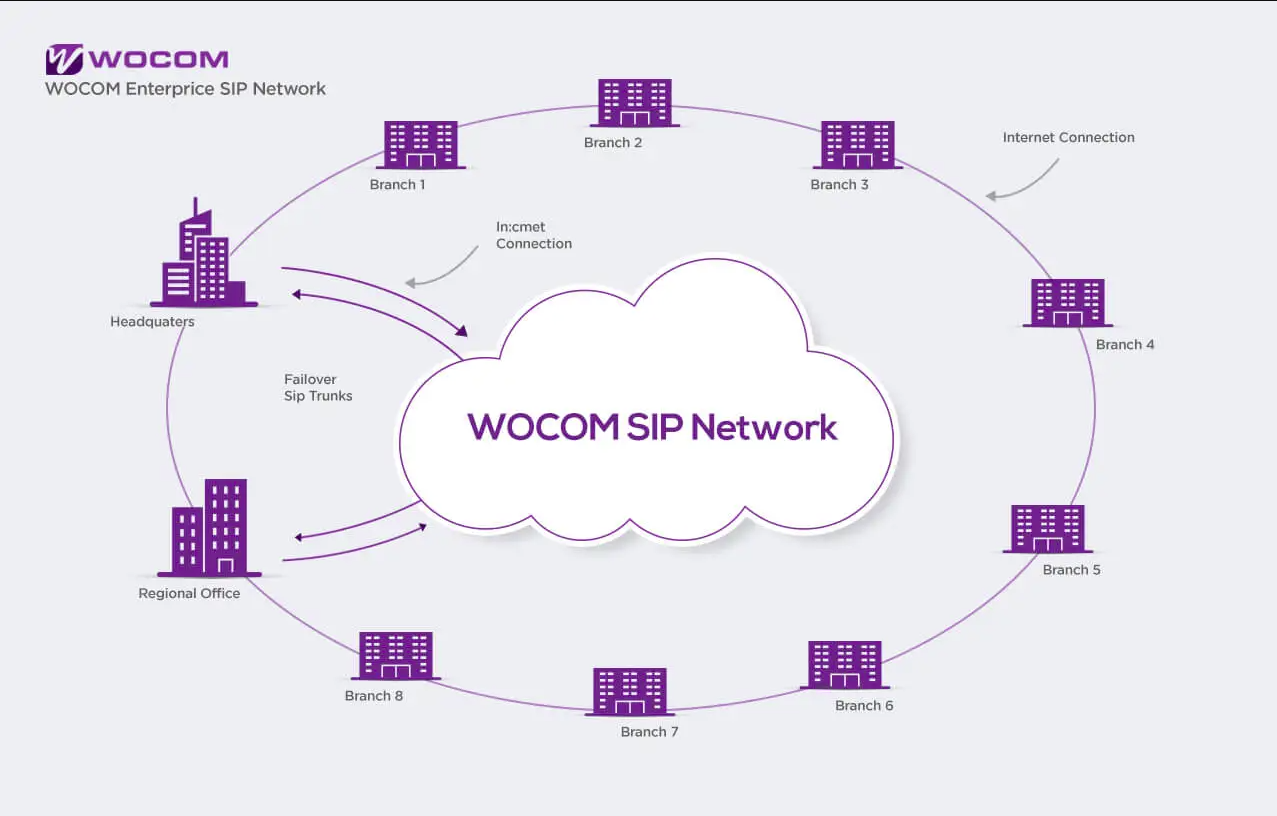This article delves into the intricacies of SIP trunks, unraveling the mystery behind their functionality and exploring how they work to deliver enhanced efficiency and flexibility for businesses.
Understanding SIP Trunks:
At its core, a SIP trunk is a virtual connection that leverages the SIP protocol to facilitate voice communication over the Internet. Unlike traditional phone lines, which rely on physical infrastructure like PRI or T1 lines, SIP trunks operate through an IP network, enabling the transmission of voice and multimedia data seamlessly.
How SIP Trunks Work:
- Initiating a Session: SIP trunks initiate communication sessions between two endpoints, whether it’s a call between two individuals or a connection with an external phone network. The SIP protocol establishes and manages these sessions, facilitating the exchange of information between devices.
- Converting Analog to Digital: When a call is made, SIP trunks convert analog voice signals into digital data packets. These packets are then transmitted over the internet using the Internet Protocol (IP). This digital conversion ensures efficient and reliable communication.
- Routing and Connectivity: SIP trunks play a crucial role in routing calls to their intended destinations. They utilize the internet or a dedicated data network to establish connections between different devices. This flexibility allows for geographic freedom, enabling businesses to connect with clients, partners, or branch offices globally.
- Versatility in Communication: SIP trunks support a wide range of communication formats, including voice, video, and messaging. This versatility empowers businesses to implement unified communication strategies, fostering collaboration and enhancing overall connectivity.
- Integration with PBX Systems: SIP trunks seamlessly integrate with Private Branch Exchange (PBX) systems, providing a bridge between traditional telephony infrastructure and modern IP-based communication. This integration allows businesses to leverage the benefits of SIP without completely overhauling their existing phone systems.
Key Advantages of SIP Trunks:
- Cost Savings: SIP trunks eliminate the need for physical phone lines and associated hardware, resulting in significant cost savings for businesses. The subscription-based model allows for more predictable monthly expenses.
- Scalability: Businesses can easily scale their communication infrastructure up or down by adding or removing SIP channels. This scalability is invaluable for companies experiencing growth or fluctuations in communication needs.
- Geographic Flexibility: SIP trunks operate over the internet, providing businesses with geographic flexibility. This enables connectivity beyond traditional boundaries, fostering communication on a global scale.
- Enhanced Features: SIP trunks support a myriad of advanced features, including video conferencing, instant messaging, and mobile integration. This ensures that businesses not only communicate efficiently but also have access to cutting-edge communication tools.
Transforming Business Communication with SIP Trunks
WOCOM SIP trunks represent a paradigm shift in business communication. Their ability to work seamlessly over the internet, support various communication formats, and integrate with existing infrastructure makes them a powerful tool for modern enterprises. As businesses continue to prioritize efficiency, flexibility, and cost-effectiveness, the adoption of SIP trunks becomes a strategic move toward a more connected and agile future.



